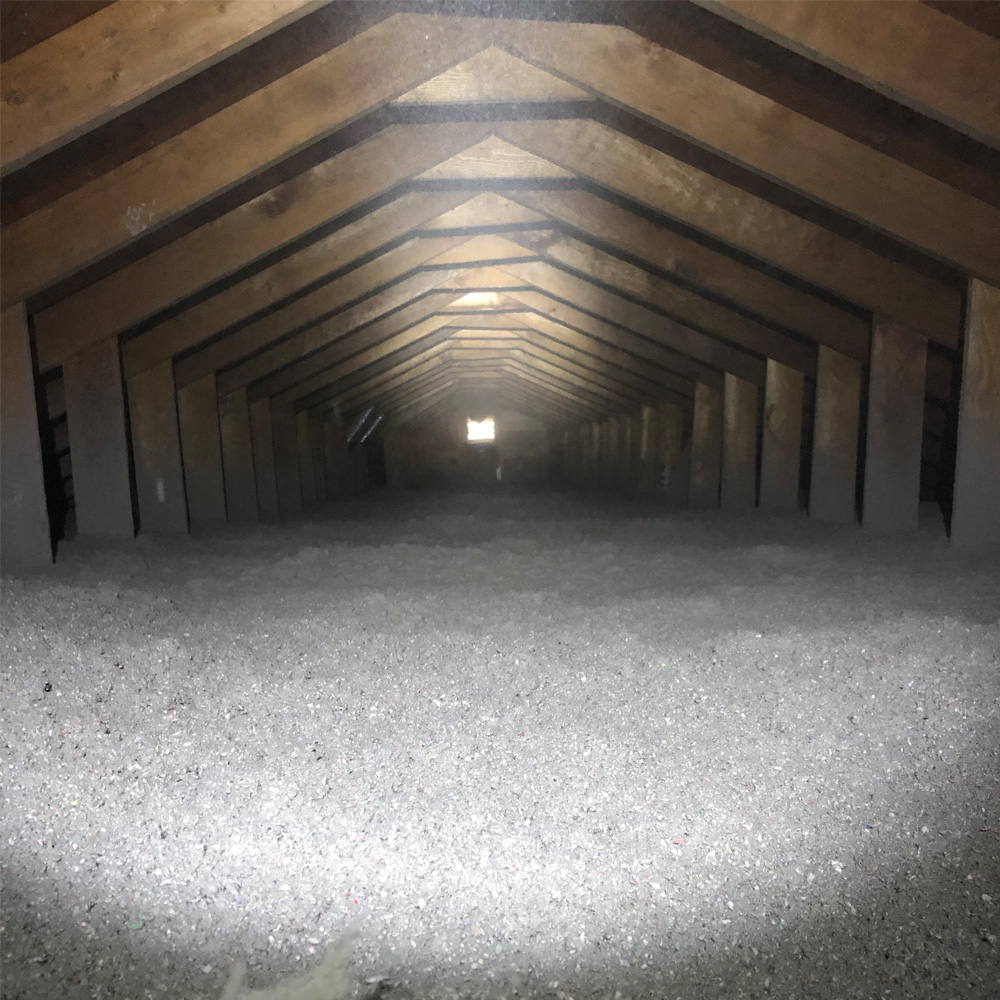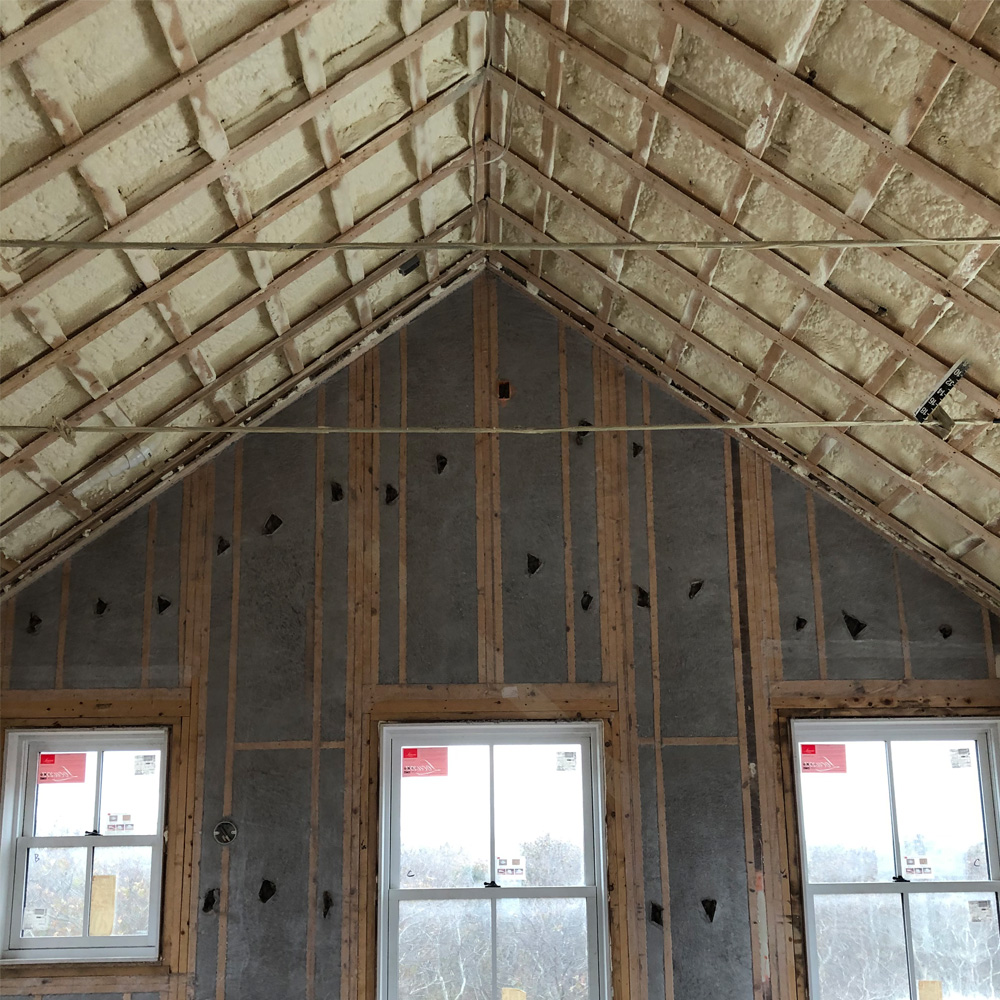Blown-in Insulation
The term blown-in insulation (or loose-fill insulation) refers to the process of filling stud or joist cavities or covering attic floors, with any loose material that has a good insulating R-value. While there are a variety of materials that can be used, including styrofoam pellets or loose fiberglass fibers, the most common material used for blown-in applications is cellulose material.


Made from recycled newspaper, cardboard, and other wood-based materials, blown-in cellulose is treated with boric acid and other substances that make it flame resistant and mold-resistant. It is then packaged in tightly packed bales or bags. Installation involves the use of a mechanical blower/hopper that churns up the cellulose material with paddles to loosen it and mix it with air, then blowns the fluffy insulation through hoses to wherever it is required. These are very expensive machines but they are available for rent, and some home improvement centers will loan out the machines for free to homeowners buying large quantities of insulation. More often, though, this installation is performed by a contractor specializing in the process.
Blown-in insulation is widely considered the best means of adding insulation in existing construction, both for attic spaces and in wall cavities.
Advantages:
A few reasons to consider blown-in Insulation for your project:
- Environmentally friendly
Cellulose is made from recycled newspaper, so it's an earth-friendly insulation solution. You can also rest assured that it's a safe product to have in your house - no formaldehyde, no harmful chemicals.
- Consistent high performance
Because cellulose is blown into cavities as small particles rather than installed in batt form, it's far less likely to come with gaps and air leaks around the edges. This means that you get consistent high performance - for a cozier, more energy efficient home.
- Fire retardant
Cellulose is treated with the flame retardant borate, which is highly effective at slowing down the spread of fires. A house that is insulated with blown in cellulose insulation is safer from a fire-hazard standpoint than an uninsulated house.
